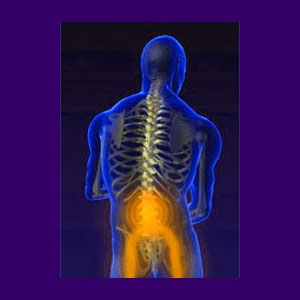
Saddle anesthesia describes a condition wherein the patient loses normal sensation in the upper inner legs, inner aspects of the buttocks and perineum regions. Basically, all the areas of the anatomy that would touch a saddle are affected by numbness and/or tingling. Saddle paresthesia is often considered a symptom of multiple lumbar and sacral nerve root compression, also called cauda equina syndrome. However, the condition can also be generated from central spinal stenosis virtually anywhere in the anatomy, as well as from certain types of pseudo-sciatica disorders.
Saddle-specific anesthesia rarely exists as an exclusive symptom, but instead, usually is present along with other sciatica expressions, including pain, tingling, weakness or numbness in much of the lower body region.
This exploration focuses on defining and explaining saddle paresthesia. We will detail the symptoms, causes and treatment recommendations for patients who are affected by this alarming neurological syndrome.
Symptoms of Saddle Anesthesia
Anesthesia, by definition, describes a reduction or loss in feeling in a given area of the anatomy. Therefore, the primary symptom of saddle paresthesia is subjective or objective numbness in between the buttocks, in the perineal region of the anatomy.
In most patients, the numb feeling will occupy the entire saddle region, including the upper inner aspects of both legs, the inner recesses of the buttocks, including the anus, and the lower groin, including the genitals. Some patients might experience dull pain, as well, or may suffer intermittent tingling, akin to pins and needles in the area.
Being that the most sensitive parts of the anatomy are typically affected, patients might also suffer dysfunction in the anus or genitals. Typical expressions might include constipation, fecal incontinence, urinary incontinence, sexual dysfunction and vaginal dryness problems. Related neurological expressions in other areas of the anatomy might include weakness in the legs, difficulty standing, general sciatica, dorsiflexion deficit in the foot and lower back pain.
Causes of Saddle Paresthesia
The most common reason for saddle paresthesia to occur is group compression of the lumbar and sacral nerve roots in the lower back, due to some structural abnormality, such as a herniated disc, osteoarthritic process, vertebral slippage condition, atypical spinal curvature or congenitally-narrowed central vertebral canal space. However, identical symptoms can result from other possible causes, as well, including any of the following conditions:
Central stenosis in the neck, thoracic region or upper lumbar spine can impinge on the spinal cord, causing a diversity of possible expressions, including saddle-specific anesthesia.
Particular neuromuscular disorders might victimize the structures that innervate the saddle region of the anatomy, causing dysfunction.
Mindbody causation might include psychogenic ischemia of the lumbo-sacral nerve roots or the local nerves in the saddle region.
Nonspinal compression of localized nerves might cause some expressions of saddle anesthesia. Local nerves might be impinged upon by muscular structures, tumors or cysts. Likewise, nerves might suffer direct injury from trauma or suffer disease-related reduced functionality, leading to symptoms.
Saddle Anesthesia Help
Saddle-region anesthesia might be a serious health issue, especially if it is caused by neurological compression. This is because the longer a nerve remains compressed, the more likely it is to suffer lasting functional impairment, leading to permanent symptomology.
Even the least serious mindbody causes are usually grounds for emergency evaluation, even when the nerves stand no chance of sustaining enduring damage. This is because the symptoms of saddle paresthesia are functionally disabling and might be incredibly disruptive, especially in cases of incontinence.
Any saddle location symptoms should always be reported to a qualified neurologist for expert evaluation. Diagnostic testing should be able to determine any structural origin, immediately for spinal conditions, or through the process of elimination for less common causations. Patients must not delay in seeking care, since the risk of lasting neurological injury might increase with the passage of time.
In cases of cauda equina syndrome, surgery will usually be recommended and might even be scheduled immediately, as an emergency intervention. When the diagnosis is correct, most procedures stand a good chance of resolving the terrible neurological expressions and returning the patient to normal or near-normal functionality.
Disease-oriented or psychosomatic versions of saddle paresthesia might be more difficult to diagnose and/or treat effectively. Mindbody variants typically defy proper identification, while many neuromuscular disorders have limited effectual therapy options available.





